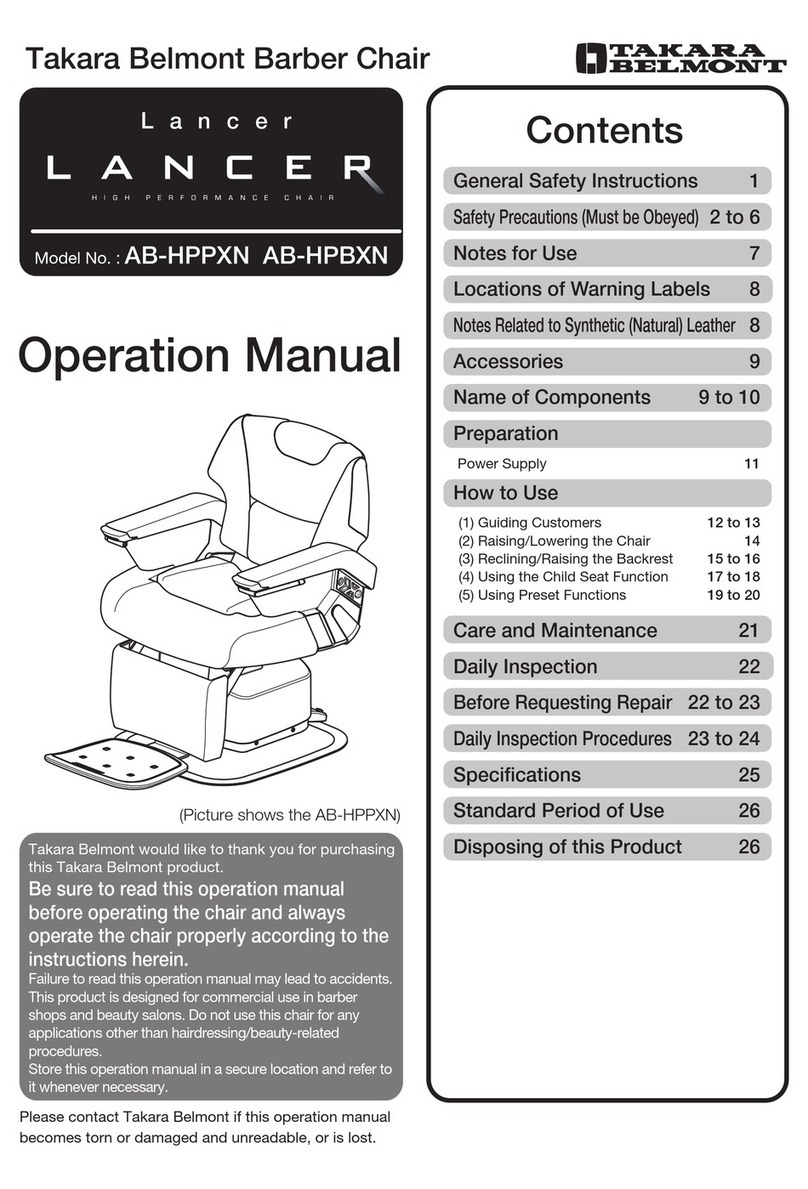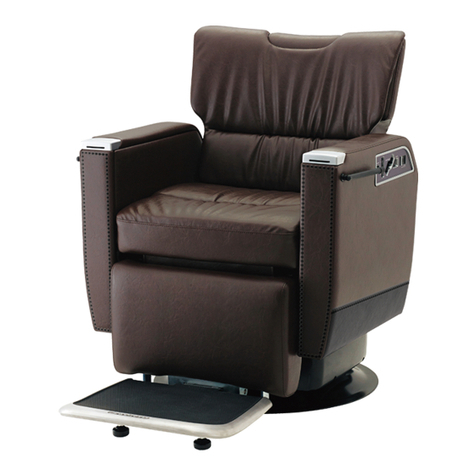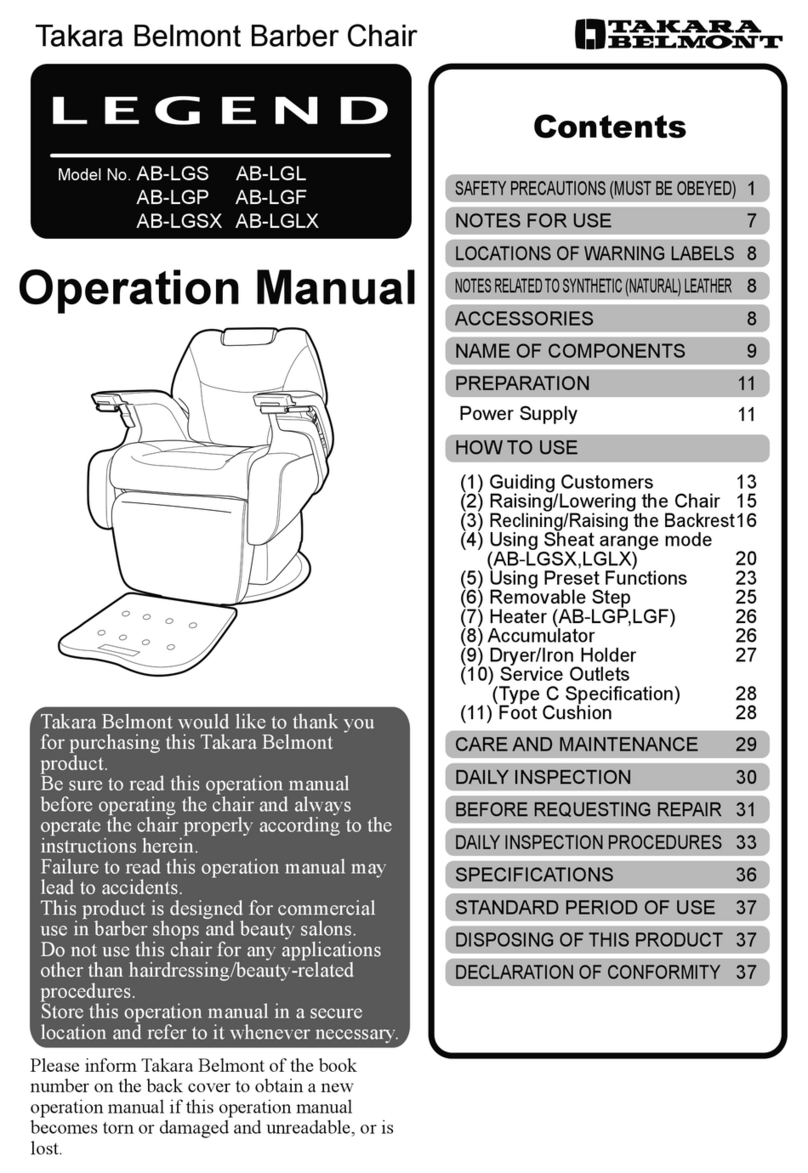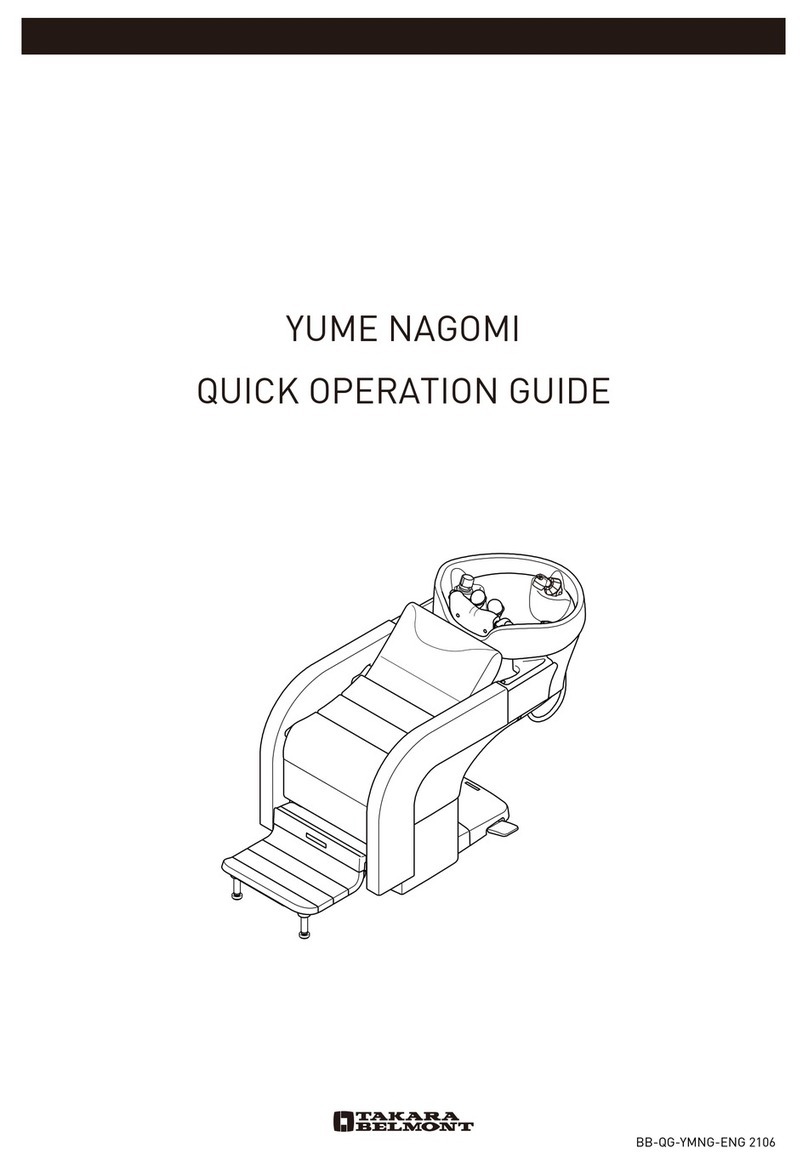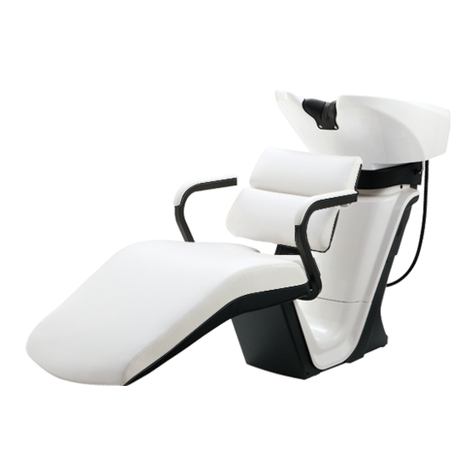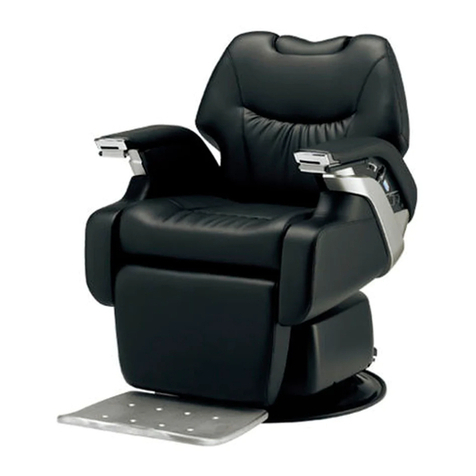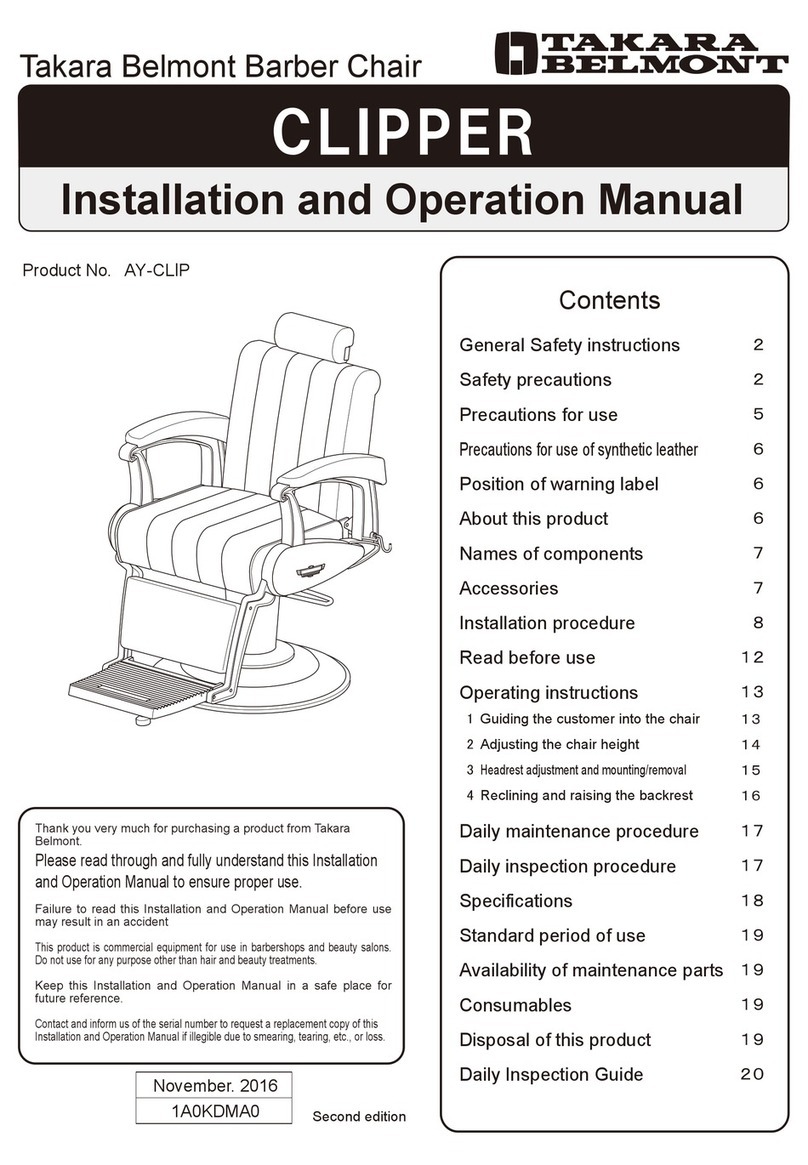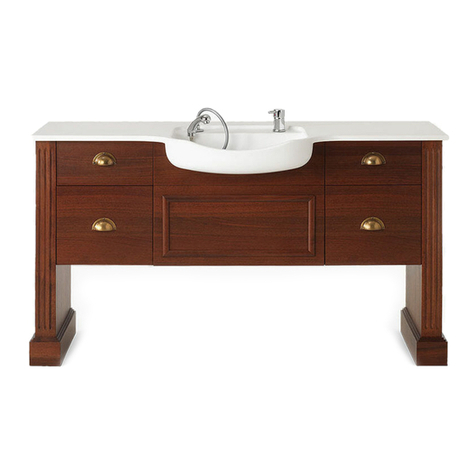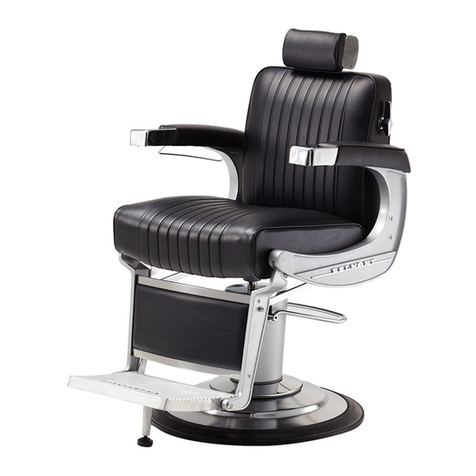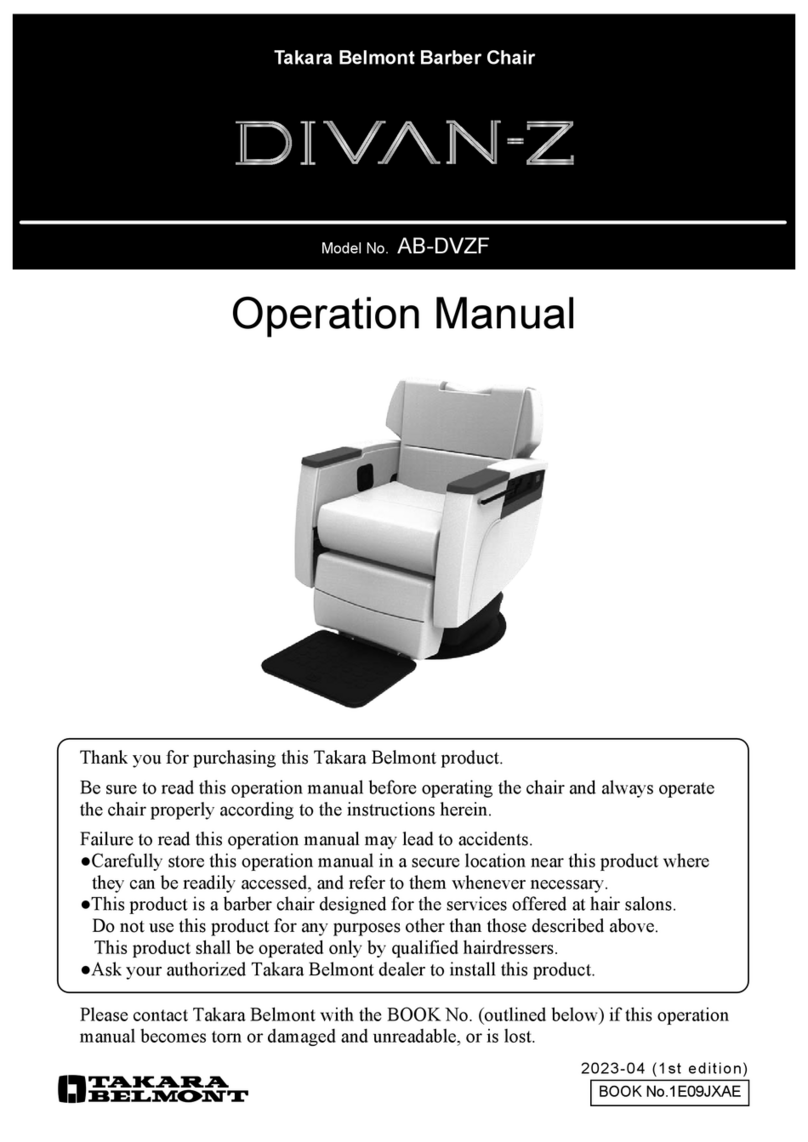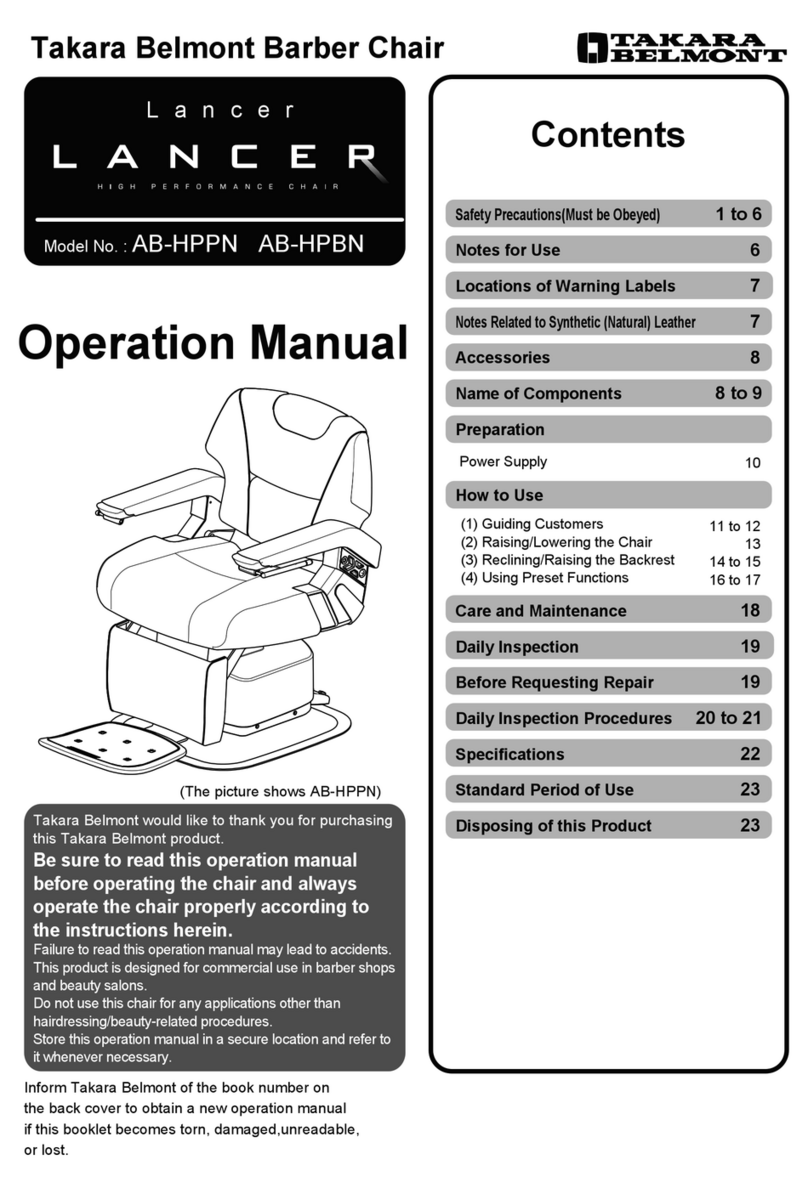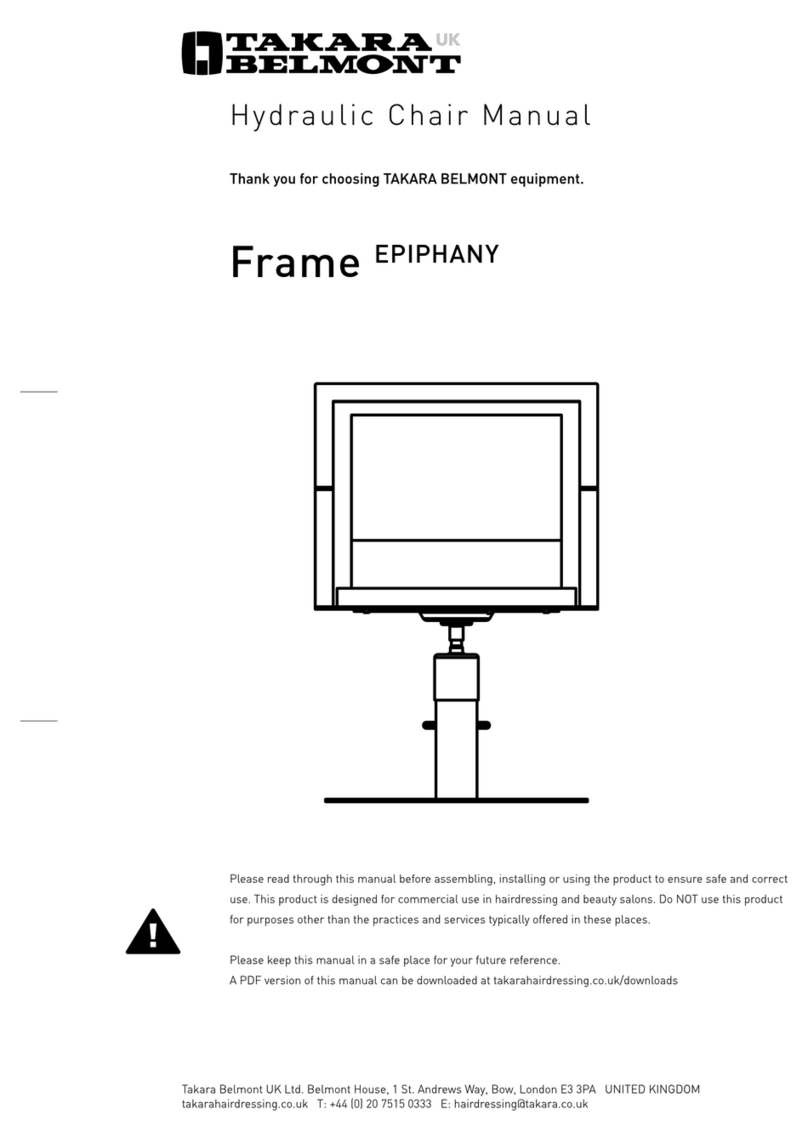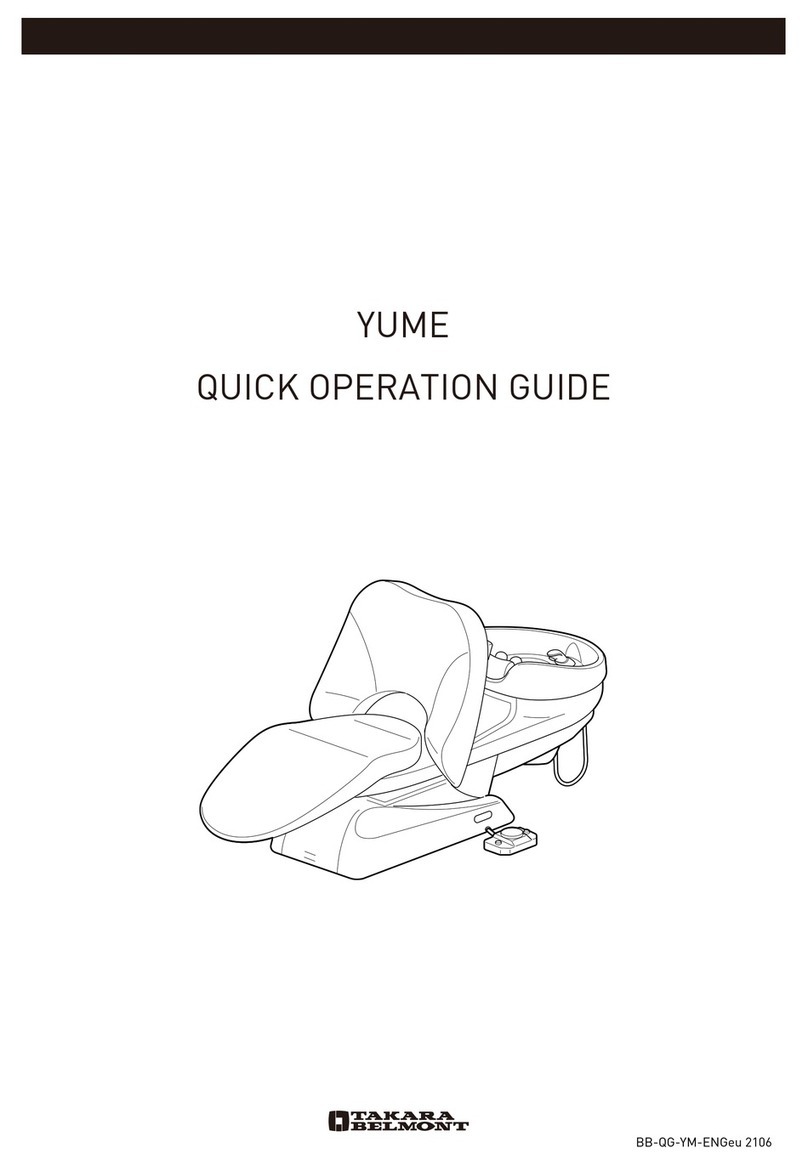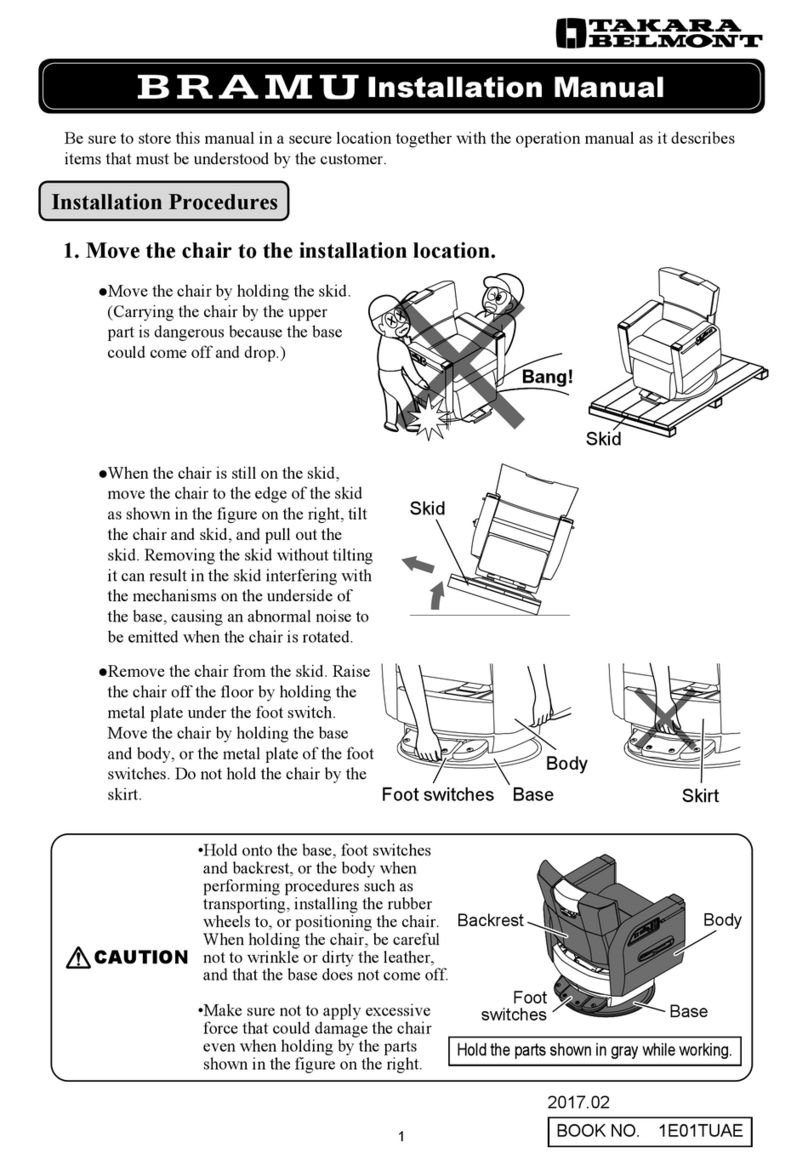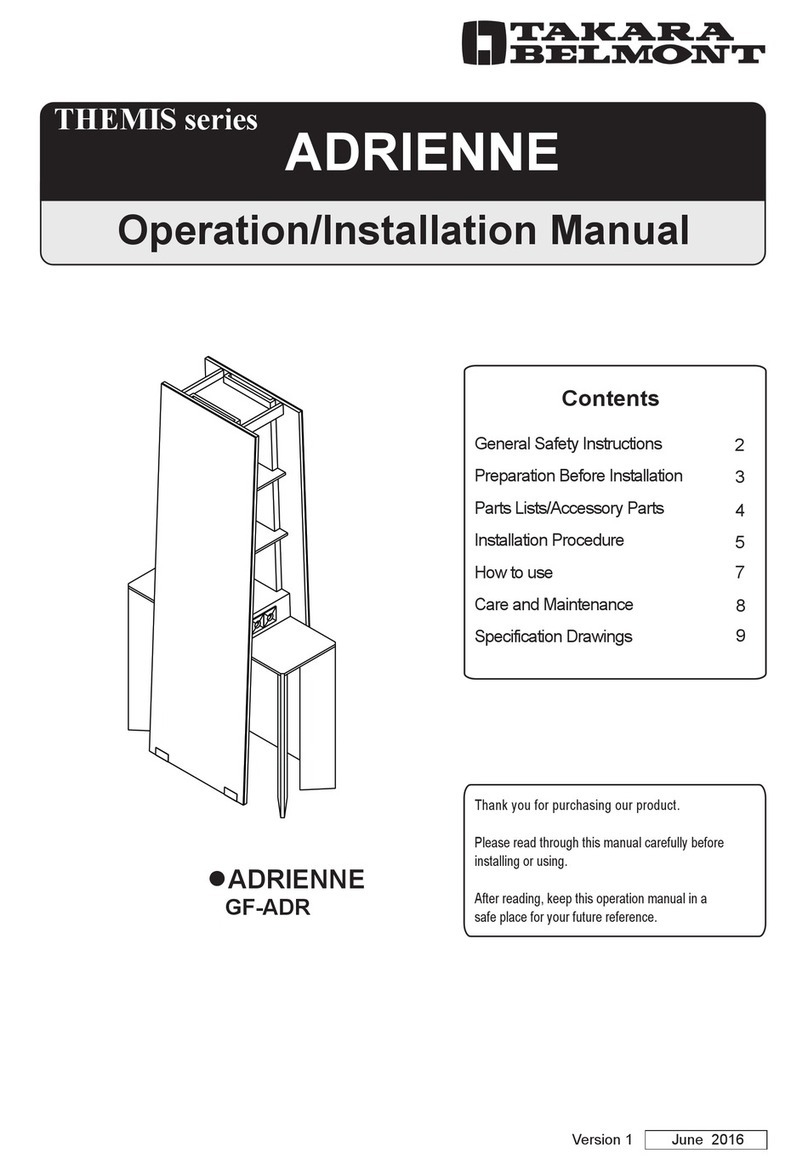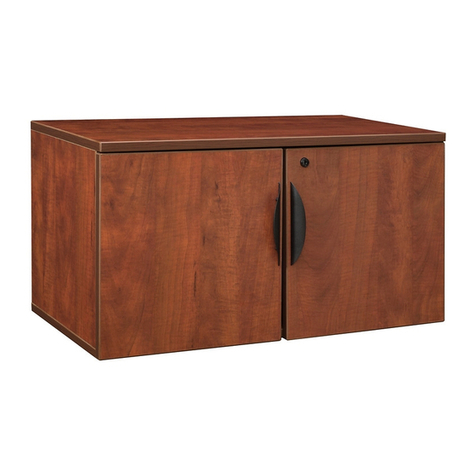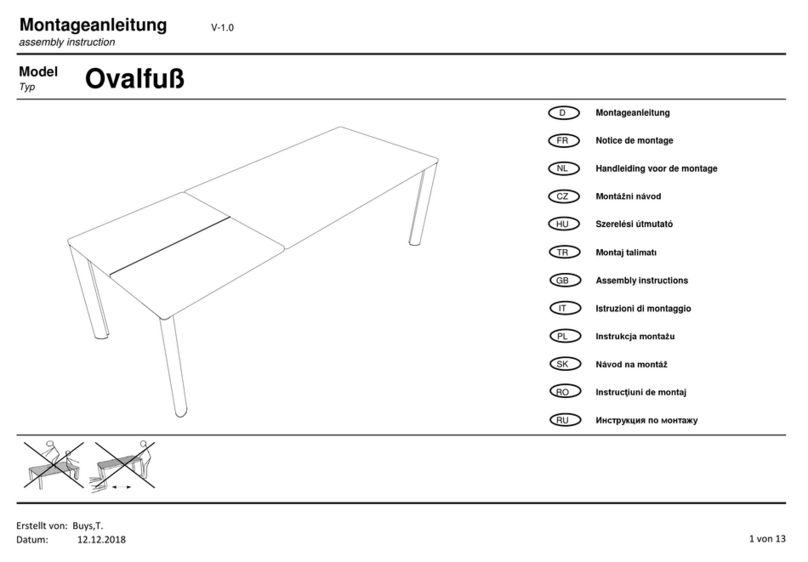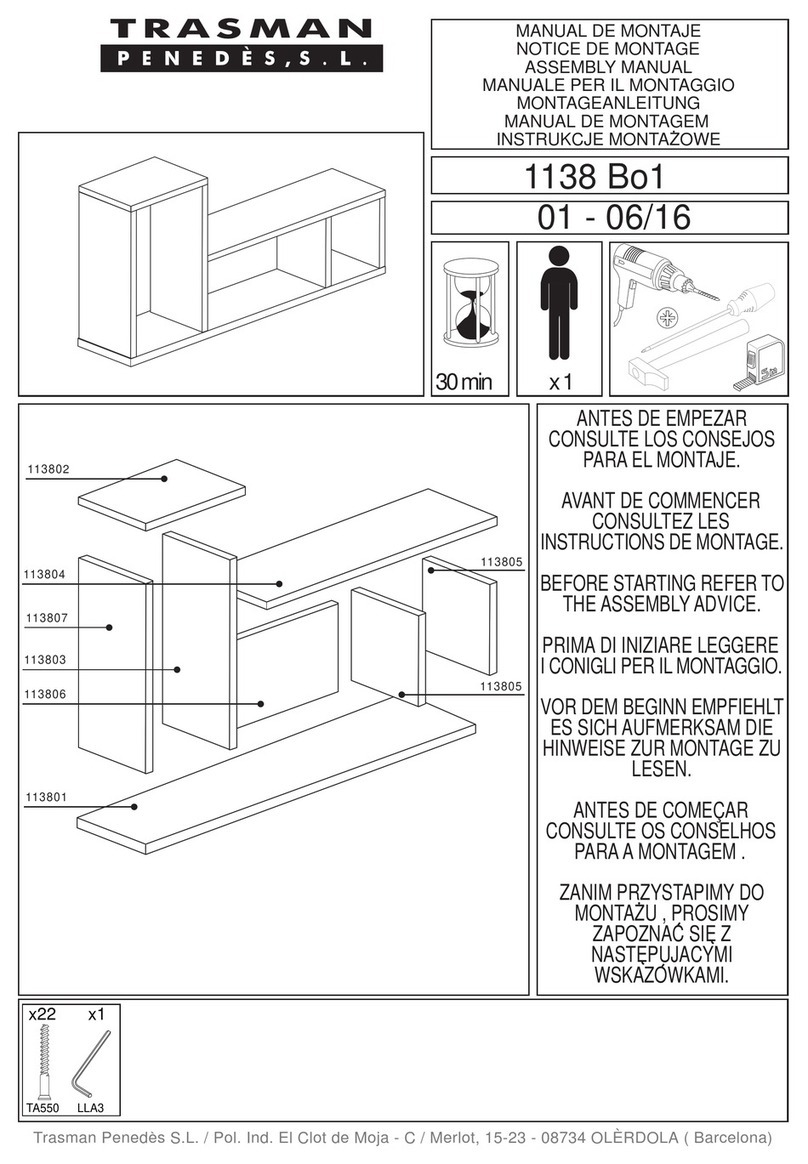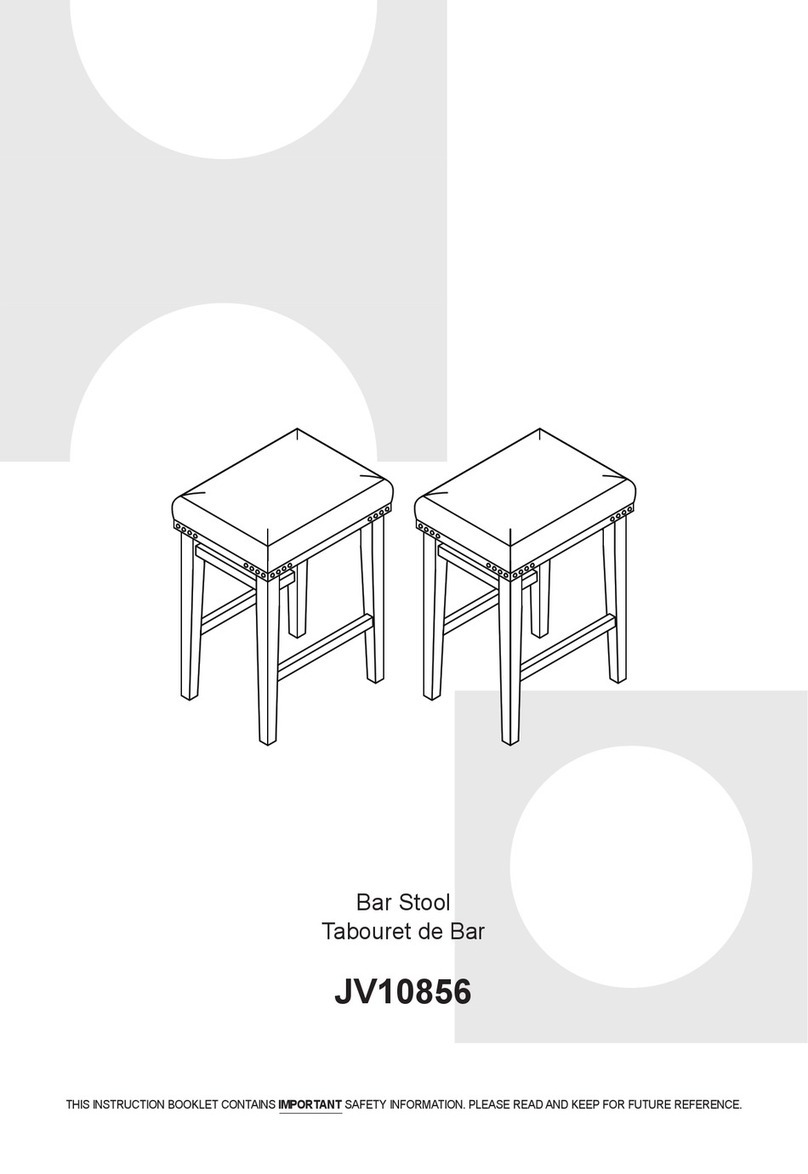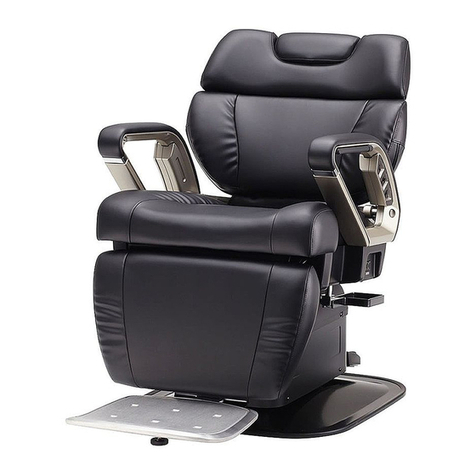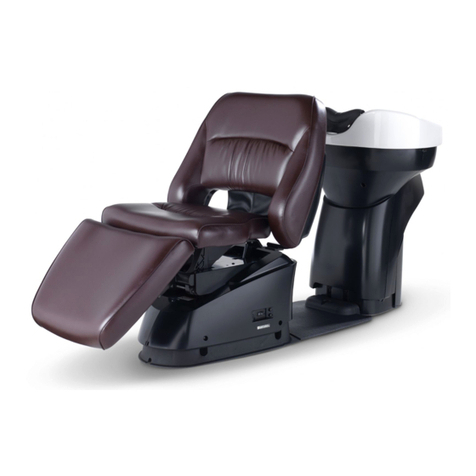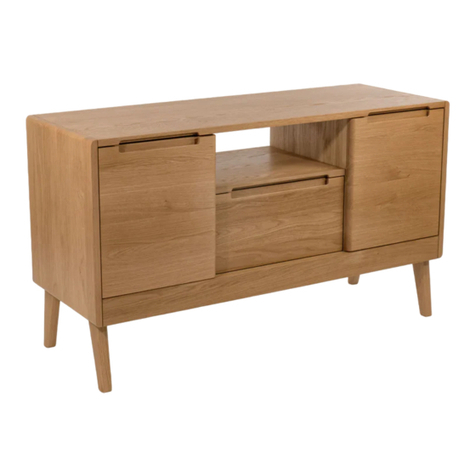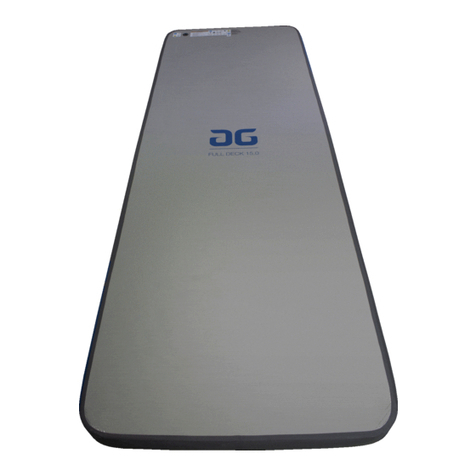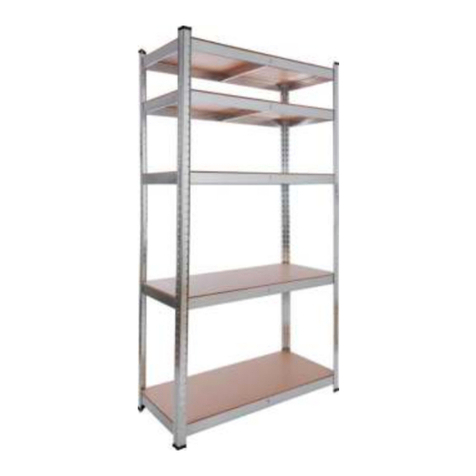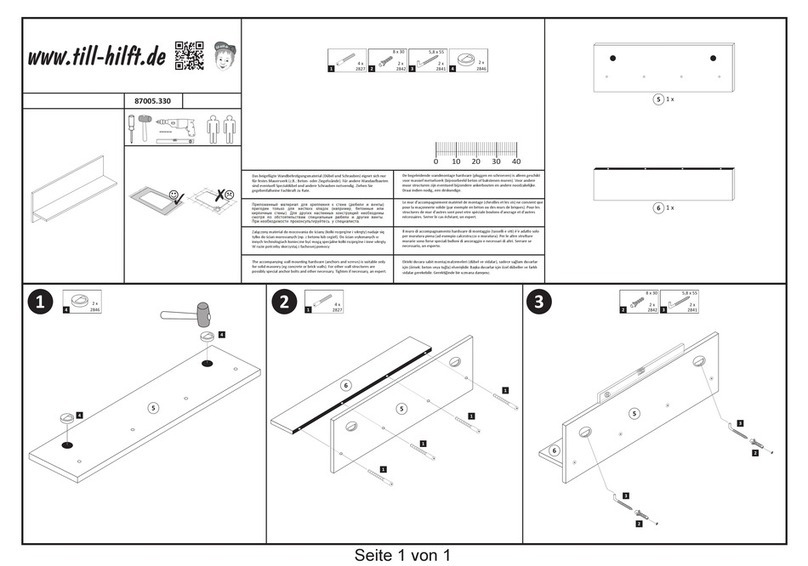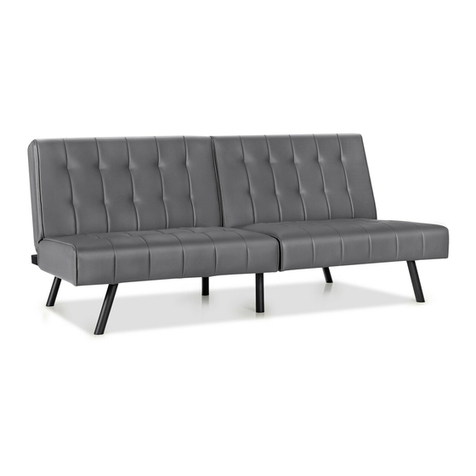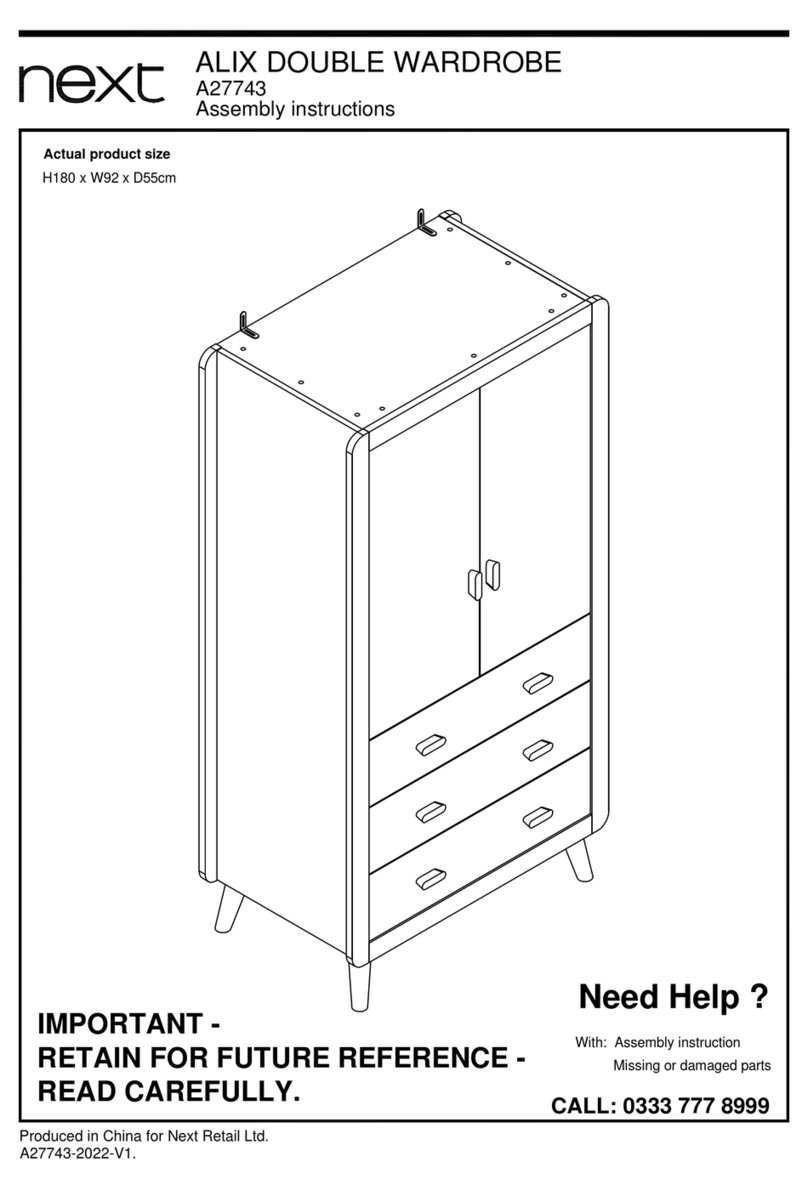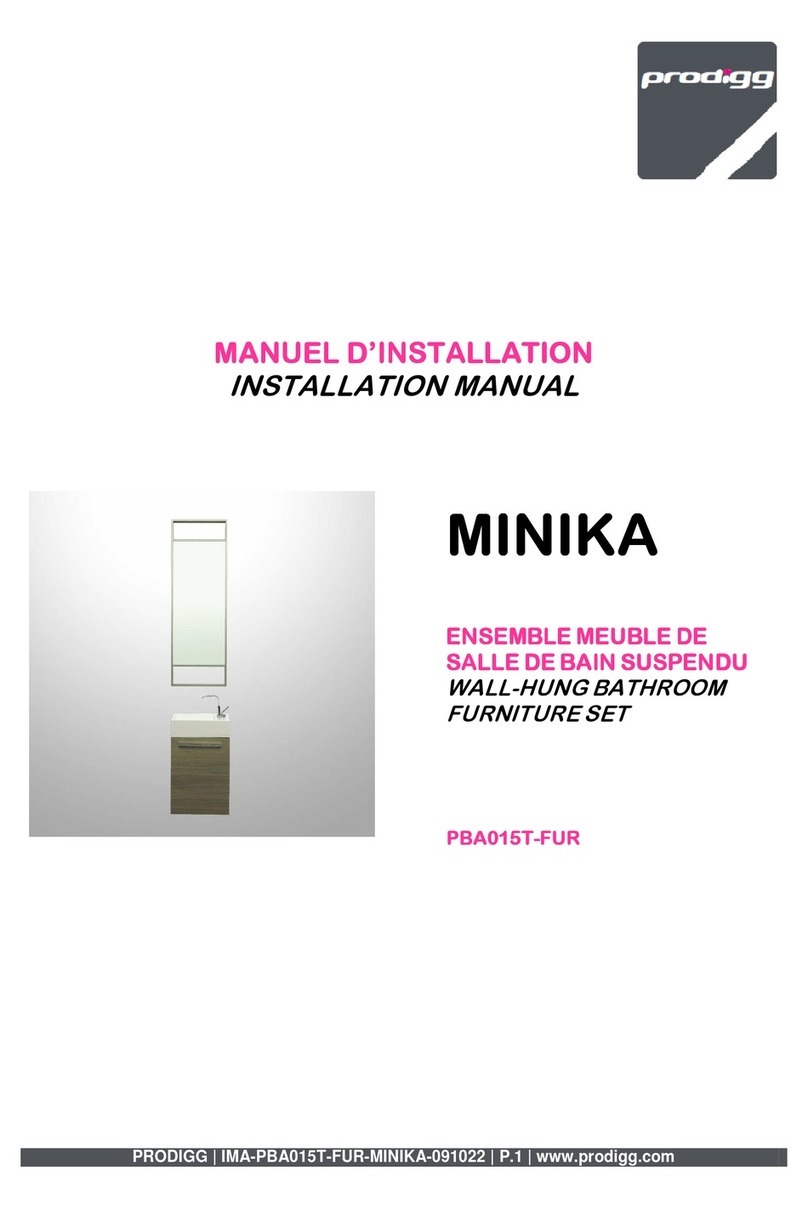
Warning
Caution
Notes for Use
Notes for Use with Upholstery
Before or during operation of the chair, sufficient care must be taken to
ensure that bodies, hands and feet, or obstructions are not around the
operating range (raise/lower direction of the chair, recline/raise direction of
the backrest, raise/lower direction of the legrest, and the rotation direction
of the chair). If care is not taken to do so, it may result in being pinched by
the chair, and may cause bodily harm or property damage.
When operating the chair, mind the surrounding area
Sitting on the backrest may result in bodily injury or may
cause the chair to break from falling over.
Do NOT sit on the backrest
When reclining or raising the backrest, take sufficient care
to ensure that customers’ fingers or other objects are not
between the backrest and the seat. Not doing so may result
in bodily injury from pinching or other such accidents.
Be careful when reclining or raising the backrest
Have installation or mounting of the equipment
performed by a professional (from TAKARA BELMONT
or a TAKARA BELMONT specified representative).
The chair must be installed on flat and solid flooring.
If the chair is installed to an area where the flooring
surface is inclined at 5° or more, it may cause the chair
to fall over.
Be careful during installation
Never sit on the headrest, armrest, or on the front edge of the seat when the backrest has been reclined. Also, do not
apply more weight to the chair than necessary. Doing so may cause the chair to fall over or break.
Do NOT sit anywhere except the designated sitting area
Do not sit on the legrest or backrest. Also, do not apply
more than the necessary weight to the chair. Doing so may
cause the chair to fall over or break. The legrest and
backrest can withstand a load of 60kg. Do not apply more
than the necessary weight to the headrest or armrest. The
headrest can withstand a load of 10kg.
Do NOT apply excessive weight to any
part of the chair
To transport the chair, hold the up/down foot pedals and
base plate. Do not lift up the chair by holding the upper seat
unit only. Otherwise, the base unit may fall off and cause
serious injury.
When moving the chair, make sure to hold
the following locations
Putting things other than people may cause deformation,
tearing, or corrosion of the upholstery.
Adherence of fabric dyes
The upholstery may be stained by coming into contact with fabric, belts or other such attire. In order to avoid infiltration
by plasticizer when color has been adhered, apply a solution of neutral detergent diluted by about 10% to a soft towel
and wipe off the color as soon as possible. After wiping off the color, wipe the area dry.
Caution for deterioration and color staining caused by contact
Contact with things such as other plastic parts, paints, solvents, and adhesive tape may cause changes to the surface
shine, cracking, deformation, or peeling.
Contact with newspaper or printed materials may cause color staining.
Contact with T-shirt prints, jeans and other such items may cause color staining from dyes in the upholstery.
Contact with things like benzene, polish remover, or alcohol may cause the surface to discolor, dissolve, harden,
soften, peel, extract plasticizer, or experience changes to its shine.
Using bleach or sheets that use bleach may cause discoloration or changes to shine.
When placed next to a source of excessive heat such as an iron or heater, deformation or discoloration may occur.
Shield the upholstery with a curtain or other such item so that it does not come into contact with direct sunlight.
Otherwise, surface changes, shrinkage, discoloration, or fading may occur.
Heavy objects placed on the upholstery for long periods of time may leave an impression and wrinkles may become
unable to be removed.
Do NOT put things other than people on the seat
If any chemicals are splashed on the upholstery parts, wipe
off the chemical immediately. Splashed chemicals may
cause discoloration or deterioration.
Do NOT clean using chemicals or apply heat
2
